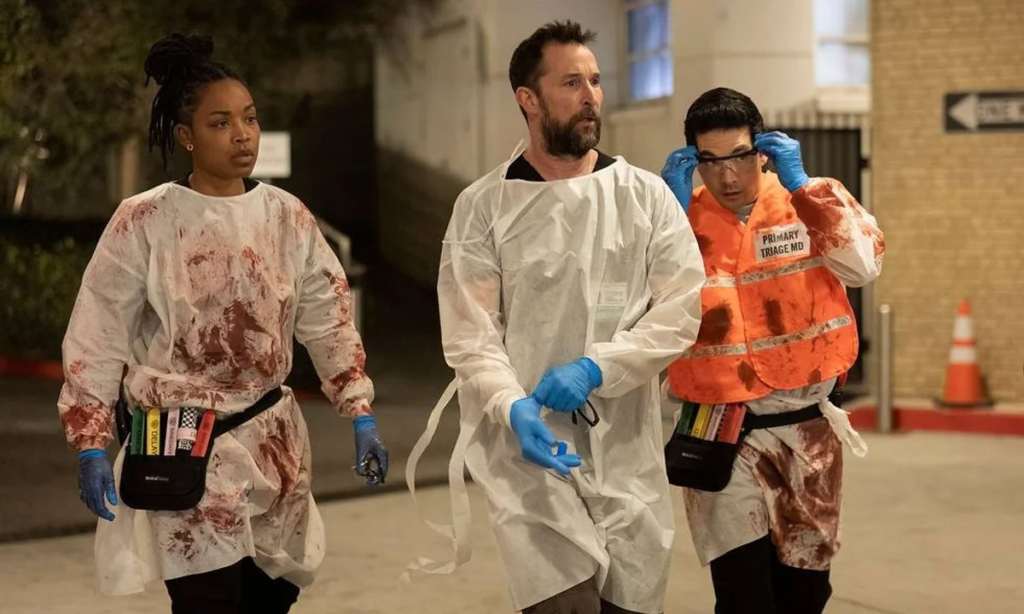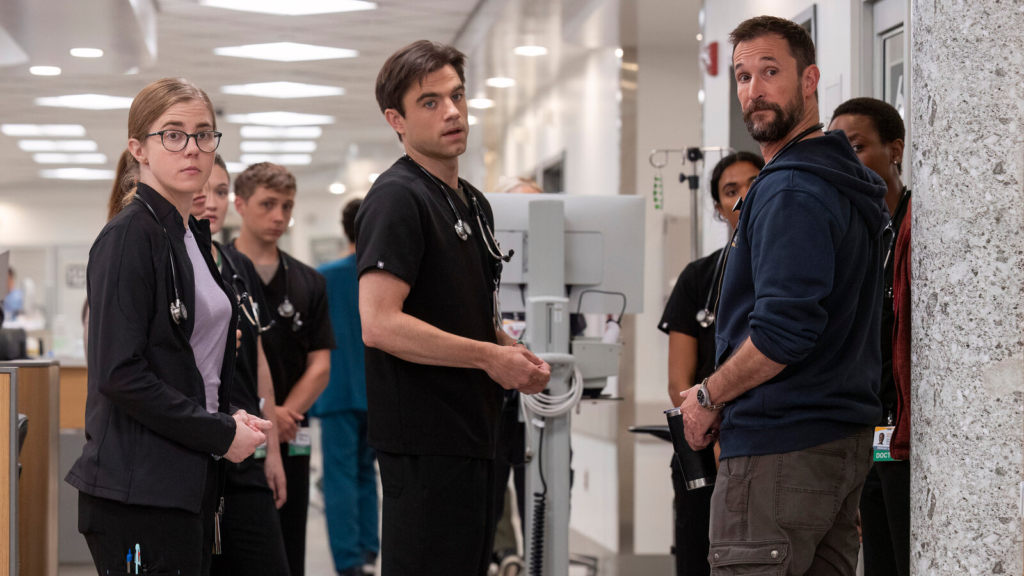
From AirPods to a Pacemaker: How The Pitt Uses Music to Bridge the Living and the Dead
It starts with something so ordinary it barely registers—AirPods and the faint, familiar hook of Justin Bieber’s “Baby.” But in The Pitt, that fleeting, modern moment becomes the opening note of a haunting meditation on connection, loss, and memory. What seems like casual listening is actually the first thread in a deeper story—a soundtrack woven through the ruins of survival.
As the world crumbles, music becomes the only thing that still makes sense.
In The Pitt’s bleak, post-collapse setting, where language fractures and silence swallows meaning, music remains untouched. It becomes the final voice—speaking when people can’t. There are no monologues, no explanatory flashbacks. Instead, it’s a stray melody, a beat shared between strangers, or a remembered tune that anchors a soul too tired to speak.

The soundtrack doesn’t decorate the story—it is the story.
From the soft pulse of a pop song danced to in secret, to the aching climax where “Fail Forward” plays as life flickers between memory and fading breath, the film uses sound not to heighten emotion, but to carry it. In one scene, a pacemaker syncs to the beat of a dying song—a quiet metaphor for life extending past the body, through music.
In The Pitt, the playlist is more than a mood—it’s what’s left of us.
No sweeping strings. No big finale. Just sound—personal, imperfect, and human. And somehow, in a world of collapse, The Pitt argues that the last sacred thing may be the music we forgot was still playing. It doesn’t save the world—but it keeps it feeling real, even in the silence.
